Your Nerd Side Halloween Special 01
Your Nerd Side Halloween Special 02
Hayden Christensen's equally maligned and beloved version of Anakin Skywalker has now appeared in two Disney+ Star Wars series. On Obi-Wan Kenobi, he appeared both in flashback as his younger self and in the main story as Darth Vader at the height of his powers. On Ahsoka, he appeared to the title character in the World Between Worlds to teach his former padawan one final lesson and as a Force ghost in the season finale. While these appearances effectively served the stories of both shows, the Star Wars franchise has yet to make the most interesting use of Hayden Christensen's willingness to revisit the role that made him famous.
Throughout the movies and TV shows that make up the Star Wars saga, Sith Lords and Dark Side Force-wielders of all kinds have bedeviled the Jedi and their allies. Often, these villains are former heroes who, for myriad reasons, give into their baser instincts and embrace lives of violence and domination. This conversion is usually permanent, but sometimes, characters like Darth Vader and Kylo Ren eventually see the error of their ways and turn back to the light. Unfortunately, death always seems to follow close on the heels of this change. As a result, Star Wars has never depicted a former Dark Sider grappling with the weight of their crimes. Ahsoka could change this by making Anakin's Force ghost a much bigger part of Season 2.
The Line Between Darth Vader and Anakin Skywalker Is Blurry
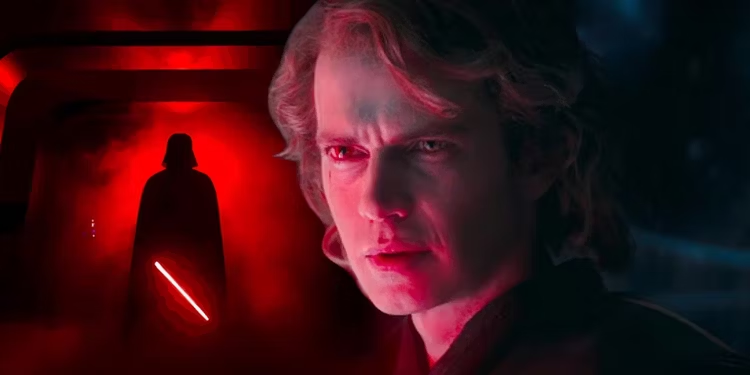
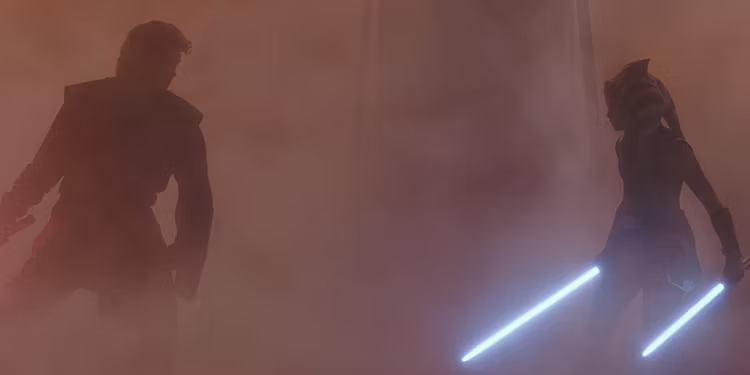
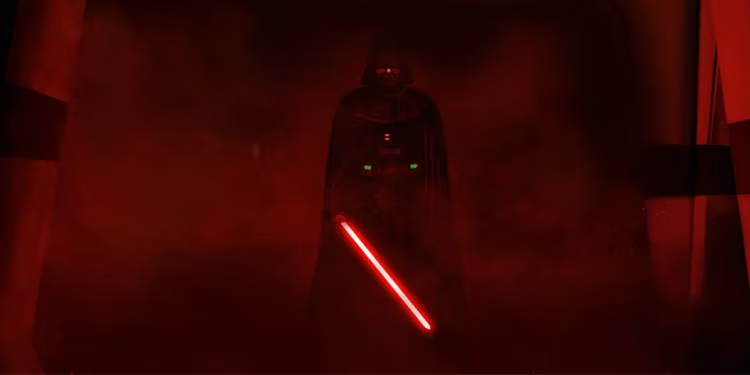
Star Wars mythology often depicts succumbing to the Dark Side as akin to becoming an entirely different person. In Return of the Jedi, Obi-Wan tells Luke that in becoming Darth Vader, Anakin Skywalker died, as though there was a clear demarcation separating the two identities. To a certain extent, the prequel trilogy bears this out. Many smaller things presage Anakin's fall, but he specifically turns when he sides with Palpatine against Mace Windu. In the span of a moment, he becomes Darth Vader. The same is true in reverse. When he chooses to save Luke from Palpatine, he becomes Anakin again.
Is this a literal identity shift, or is it simply a shorthand the movies use to illustrate the magnitude of both conversions? Ben Solo's struggles and the comparatively performative nature of his Kylo Ren persona in the sequel trilogy suggest the latter. Light side or Dark side, the Force-wielder is still the same person. However, if this is the case, do Jedi who return to the light still bear responsibility for their actions on behalf of the dark? Is Anakin guilty of Vader's sins? So far, this question has no canonical answer because no redeemed Jedi has lived long enough to provide one.
The Force Enables Fallen Jedi To Seek Redemption After Death
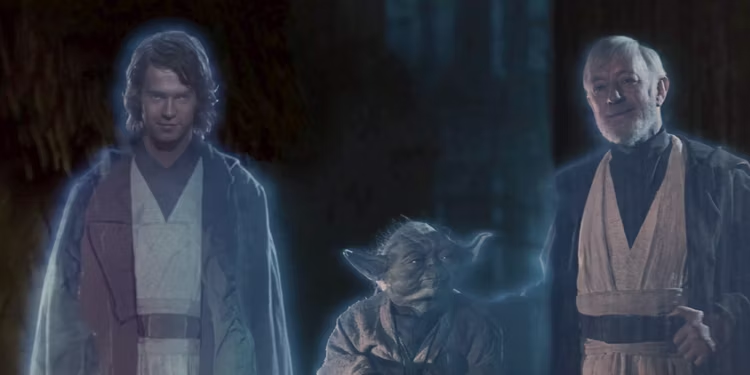
Luckily, Jedi are perfectly capable of communicating long after death. Force ghosts are not merely smiling apparitions who provide the occasional bit of silent encouragement. They can talk and—as evidenced by Yoda and Luke's actions in The Last Jedi and The Rise of Skywalker, respectively—even physically interact with the living world. Because of this, Anakin needn't be a passive observer in Ahsoka's Season 2 adventures. He can take part and provide his apprentice with guidance from beyond the grave.
Then again, the last time Ahsoka saw Anakin before he died, he tried to kill her. The two of them would need to talk some things out before she could trust whatever advice he might try to impart. Such a conversation would be the perfect opportunity to lay the groundwork for a new chapter in Anakin's story and add an entirely new dimension to Force lore. Anakin spent the last quarter-century of his life as a mass-murdering agent of oppression. A single act of repentance moments before death couldn't possibly erase all the guilt he must feel. With Ahsoka's help, he could reckon with the ramifications of his life as Darth Vader and begin his journey toward true redemption.
A cornerstone of this journey would, no doubt, involve working to make up for the litany of atrocities he committed as Emperor Palpatine's apprentice. While he may never be able to do enough to wash all of the blood off his hands, Ahsoka's first season finale sets up at least two opportunities for him to try. Having helped build the Empire into what it became and having previously interacted with the Mortis gods—assuming death restored his memories of that encounter—Anakin would be uniquely qualified to aid in the fight against Grand Admiral Thrawn and shed light on what Baylan Skoll's endgame might actually be.
Star Wars Can Break New Ground By Exploring Anakin's Guilt
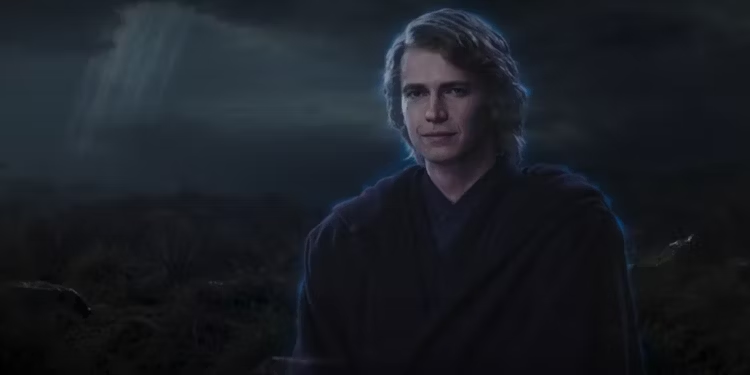
Based on the relatively limited capacity in which Force ghosts have offered assistance in previous installments of Star Wars, it is likely that Anakin will only be able to do so much to directly support Ahsoka. She and her living allies will have to do most of the heavy lifting. However, by engaging with problems he helped set in motion during his long career with the Empire, Anakin can gain a deeper understanding of the enormity of his crimes. This understanding could lead to the most important and most groundbreaking part of his quest for redemption: remorse.
In the short time between their respective Dark Side renunciations and their deaths, neither Anakin nor his grandson had a chance to sit with their guilt or express true sorrow for their actions. Ben Solo has a moment of forgiveness with the father he killed but not with any of the untold billions he helped slaughter in the Hosnian System. Star Wars movies are largely about action. They don't have time to let their characters feel the full weight of grief or shame. The villains have their final acts of selflessness and die as heroes. As a TV series, Ahsoka has the flexibility to take a different tack.
The Light/Dark binary of Star Wars often robs the series' moral code of any nuance. The Light Side is good. The Dark Side is bad. Taking the time to allow Anakin to feel remorse and all of its attendant emotions at such horrors as killing younglings and destroying planets could introduce some welcome messiness to the ethics of Star Wars. Does the Force forgive easily, or does it require penance? Perhaps it doesn’t follow any recognizable paradigm of right and wrong. The truth is a mystery the so-called “Chosen One” can help solve.
For as much as Star Wars has focused on the conflict between the Light and Dark Sides of the Force over the years, it has revealed surprisingly little about what it means to move between those two poles. What pieces of the original Jedi survive in a Sith? How much do the Sith's actions weigh on the redeemed Jedi's conscience? By giving Anakin a more prominent place in Season 2, Ahsoka can answer these questions and take both the Force and the entire Star Wars Universe in new and exciting directions.
Comments